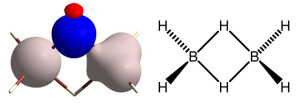Hydrogen atoms are crucially important for everything from physical properties of water to the biological function of DNA and proteins. And yet in crystal structures of proteins, and even in the small organic molecules, catching sight of them is tricky. Now, the new conventional techniques so that crystallographers everywhere can build up accurate picture of the where hydrogen atoms are located – at least for the small molecules.
Obtaining a good picture of position of a molecule’s hydrogen atoms are normally only possible using neutron diffraction, which is only available in the very few facilities at an immense cost. Conventional crystallographic datasets, but improved a quantum mechanical modelling required to produce a structure of matching the x-ray diffraction data. ‘We use mathematically more advanced model (Hirshfeld atom refinement) that includes bonding effects, so that the data can be reconstructed more successfully and hence hydrogen atoms be located accurately.
Tests applying a method to known crystallographic structures of 81 small molecules show so, that it determines bond lengths between hydrogens and other atoms are accurately as neutron diffraction. The refinement can be carried out with the free software and takes between a few hours and few days of computation time on an ordinary PC, depending on a size of the molecule.
The new work, notes that some previous attempts use it with a average quality x-ray data were less successful, but acknowledges that ‘it’s an interesting procedure and with the good quality data it certainly gives results close to the neutron diffraction standard’. The new technique has advantage that we can see hydrogens even at the resolution as low as 0.8Å.
Hydrogens in the proteins offer an even bigger challenge. Majority of hydrogens in a hydrogenase enzyme with the data of exceptionally good resolution – motivated by the functional importance of the hydrogen in that enzyme.
This method is not suitable for the proteins, as disorder remains problem even in the crystals. Atom refinement we need to calculate quantum-mechanical wavefunction for the molecule that is to be refined. ‘There is no way to calculate the wavefunctions of moving particles or overlapping molecules. The wavefunction is always static and always only applies to single molecule or molecule assembly.’ Consequently, the protein crystallographers who want to know the exact bond lengths for hydrogen atoms are stuck with the neutron diffraction for now.

